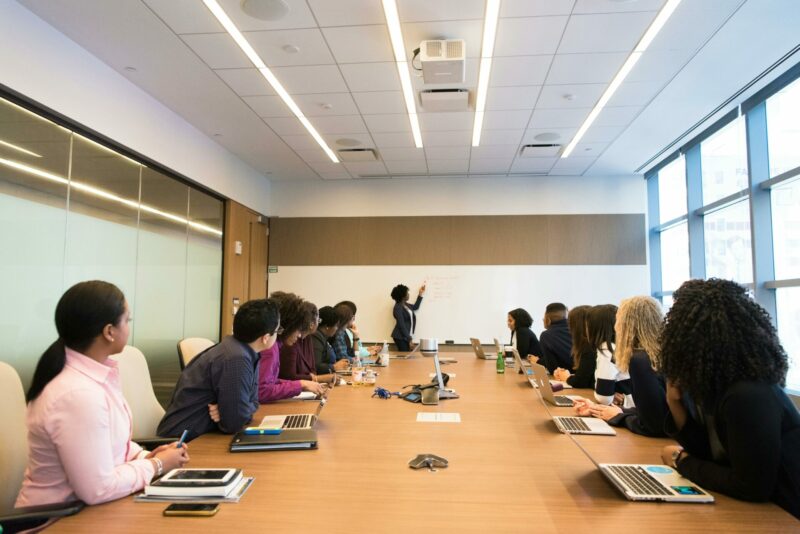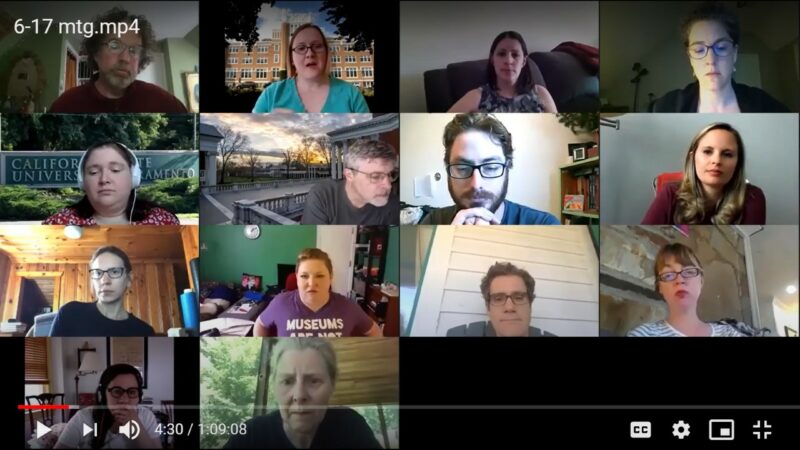Long Range Plan: Stewardship
26 April 2024 – Laurel Overstreet
If we learned anything from the 2018–2022 Long Range Plan, it’s that imagining the events of the next five years—let alone planning for them—requires a great deal of creativity. Over many months of focus groups, drafts, and revisions, the Long Range Planning Committee has worked to develop a flexible framework for a set of ambitious, but attainable, goals that build on and mutually reinforce one another. Over the past few weeks, members of the committee have shared posts exploring four of the new plan’s five pillars: Community, Advocacy, Diversity, and Practice. This post looks at the final pillar, Stewardship and Sustainability, which ties the other four together and works to make NCPH a more resilient organization.
The purpose of the Stewardship pillar is to responsibly maintain NCPH’s stability and longevity, increasing the organization’s ability to meet challenges both foreseeable and unknown. To meet this overarching aim, the Long Range Planning Committee worked with other volunteer committees, NCPH leadership and staff, and members to create actionable goals divided into four areas for improvement: internal structures, fundraising and financial transparency, the membership base, and environmental responsibility.

Photo credit: Christina Morillo, pexels.com
Part A addresses internal structures, focusing especially on NCPH staff and volunteers. In focus group sessions during 2021 and 2022, the Long Range Planning Committee heard a strong desire for more support for both paid staff and volunteers across the organization. Additionally, global challenges such as the COVID-19 pandemic and open questions like the organization’s changing relationship with IUPUI introduce uncertainty and put stress on the organization to adapt quickly. The Sustainability pillar of the 2023–2028 Long Range Plan includes provisions to explore financial and structural self-sufficiency for NCPH, create policies and procedures to manage future crises, and plan to increase the organization’s capacity to grow.
To make growth possible, an organization needs resources. Part B looks to fundraising and increased financial transparency. Over the next five years, NCPH will continue to increase the Endowment and Annual Funds while fundraising to support internal capacity and the diversity, equity, inclusion, and accessibility work outlined in the Diversity pillar. In parallel with this work, volunteer committees will also be developing a plan to communicate with members about the state of the organization’s finances.
As a professional organization, NCPH’s financial health depends on its members, and members in turn should benefit from engagement with NCPH. The pandemic revealed new and existing vulnerabilities in the organization’s membership base, providing the impetus for many of the goals set out in the Advocacy and Community pillars. Part C of the Sustainability pillar addresses member retention and engagement with NCPH, particularly for new participants and underrepresented groups. Alongside work outlined in the Community pillar, NCPH will continue developing year-round engagement opportunities, exploring new avenues of financial support for un- and underemployed public historians, and opening new paths to leadership within the organization.
Finally, this pillar addresses sustainability in its most well-known sense, looking to reduce the environmental impact of the annual meeting and to continue offering hybrid programming that, in addition to making NCPH events more accessible, reduces the organization’s carbon footprint.

Screenshot of a 2020 NCPH Working Group in action during a Zoom meeting.
To mix architectural metaphors, the Sustainability pillar supports and undergirds the work outlined by the other four pillars of the LRP. Each of the goals here depends on work already being done by NCPH Board, staff, and volunteers across the organization, work that the LRP will ideally help to structure and measure over the next five years. By strengthening the organization’s resiliency, the Sustainability pillar helps ensure that NCPH continues building community, including diverse perspectives, advocating for public history and public historians, and continually improving our shared practice.
~Laurel Overstreet is the Lead Curator for Special Exhibits at the Washington State History Museum. You can find Overstreet on Twitter @overstreet_hl.



